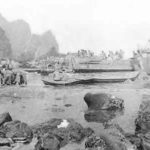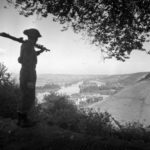The Japanese left Kiska so quickly, they left most of their weapons and equipment behind. Many of these captured weapons found their way back to Canada with the Regiments who captured them.
Featured on this page are photos of three such weapons captured by Henri’s regiment, The Winnipeg Grenadiers, in the fall of 1943. They were kept by the Grenadiers up until 1965 when the regiment was disbanded. Since then these weapons have been kept where they are currently (Jul/97) housed at the Fort Garry Horse Museum, Winnipeg. Very soon they are being transferred to the Royal Winnipeg Rifles Museum for possible inclusion in a display.
The weapons include a Heavy Machine gun (Type 92), a light machine gun and a Japanese “Knee” Mortar. When viewing these weapons in person, one cannot help to think about the insurmountable odds which would have had to been overcome on Kiska if the Japanese would have remained and manned these weapons. Obviously, the outcome of Kiska would not have been trophies and “what if” stories; it would have been a much more gloomy outcome.
Heavy machine gun: 7.7mm Type 92
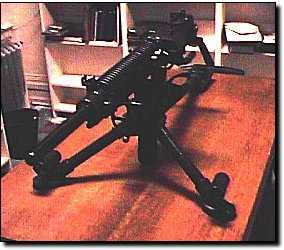
Introduced in 1932, this was the most widely used Japanese machine gun of World War II. It was crewed by two men who carried the gun and mount by fitting two poles in the sockets on the front tripod legs and a fork shaped pipe in the rear tripod leg. The whole assembly was then carried like a stretcher. The design of the gun is an adaptation of the French Hotchkiss system and was developed as an improvement of the type 3 machine gun, first manufactured in 1914. It was designed by General Nambu and is often known by that name. The gun is fed by inserting 30 round strips of cartirdges in the left side. As each cartridge is fed into the reciever, it passes under a brush which oils the casing for easier extraction. This system could lead to stoppages in dusty conditions. Another characteristic of the gun, due to the weight of the ammunition strip, was it’s varying rate of fire, starting slowly while the strip was full, and speeding up as the strip lightened.
Weight 122 lb with tripod
Muzzle velocity 2400 fps
Cyclic rate of fire 450-500 rpm
Light Machine Gun – 7.7mm Type 99
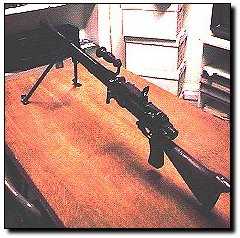
This was an improved version of the type 96 gun of 1936, and was introduced in 1939. Better machining allowed it to do away with the need to oil the cartridges prior to loading. The weapon has a top-mounted 30 round box feed and a quick change barrel
Weight 23 lb
Muzzle velocity 2350 fps
Cyclic rate of fire 850 rpm
50 mm Mortar
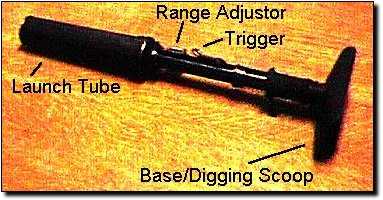
This was a simple grenade thrower used by the Japanese infantry. It has a short rifled barrel with an adjustable threaded rod inside. Always fired at an angle of 45 degrees, the range of the projectile was adjusted by moving the rod inside the barrel, thus altering the space inside for combustion. The bottom has a small curved plate to dig into the ground. The Japanese called it a “Leg Mortar” as it was carried strapped to the leg, but a mis-translation in Allied reports led to the term “knee mortar” and the belief that it was fired holding the curved plate against the thigh. How many allied servicemen broke their thighs firing captured examples is unknown.
Weight of grenade 1.43 lb
Max range 700 yards
Weight of mortar 10.05 lb
Many thanks to Gord Crossley of the Fort Garry Horse Museum for telling me about these “trophies”, letting me photograph them and for providing the descriptions found on this page.

